Paula Brackston's Blog
July 7, 2025
Brockhampton – Skyla Investigates Part VIII
 Brockhampton House in all it’s grandeur!Investigation Hat On!
Brockhampton House in all it’s grandeur!Investigation Hat On!Welcome to another research article! Today I will be looking into Brockhampton in Herefordshire. There are multiple reasons for me looking into the house but the main one being that it features in the ‘Hecate Cavendish’ series. I’ll let you all in on a little piece of information, the true significance of Brockhampton will be revealed in ‘The Cathedral of Lost Souls’ (ARCs out now!). Another reason for my research is that Mum and I visited Brockhampton for … research purposes (and the fabulous ice cream). I haven’t visited a National Trust property in a while so it was so refreshing to go again.
IntroductionA little introduction to Brockhampton itself before I get into the history of it. It is found at the centre of the 1,700 acre estate and is formally known as Lower Brockhampton Manor House. The house itself is surrounded by a moat that can be crossed using the gatehouse. Gatehouses aren’t usually built for houses this small but in 1530 they wanted to make the house look grander! Understandable really. We explored the 21 acres of orchard walks whilst we were there and even met some lovely Hebrides sheep! The property is currently owned and maintained by the National Trust, meaning the grounds are well and truly looked after.
HistoryThis house was built in around 1425 for John Dumbleton. The wood used to build it is presumed to be sourced from the estate itself, making it even more connected to the land it sits upon. From the 18th century onwards, the house belonged to the estate wagoner, Joseph Cureton. This was after it became the custom for the owning family to live in a separate house from their estate workers and servants. The owner of the estate at that time was Bartholomew Barneby, who moved himself and his family to a newly built mansion at the top end of the estate.
RevampingBy the Victorian times, the house had fallen into disrepair with broken timbers and unkempt grounds. A retired architect named JC Buckler discovered the property in shambles and was commissioned to return it to its original glory. Repairs were made only where necessary to keep the authentic original look. Parts that had to be hugely repaired were then stained and treated to look old and blend back in. They removed a bedroom floor that had been added years after it was built to once again return it to how it would’ve originally looked.
Spooky HappeningsBeing almost 600 years old means that the house has obtained a few ghost stories. There have been reports of temperature drops, perfume smells and footsteps following you through the rooms. Even in the gatehouse there are mysterious marks on the walls with many stories as to what they might be.
SummaryIt is always enjoyable to make research articles on places that I have visited as it makes every bit of information come to life and causes me to feel as if I have travelled back to when the building was first built. I liked that the house wasn’t too big, it makes it seem realistically manageable. I don’t think I could cope with an actual mansion, too many floors to hoover. However, who wouldn’t want their very own moat?!
 Me for scale!
Me for scale!The post Brockhampton – Skyla Investigates Part VIII appeared first on Paula Brackston.
October 4, 2024
Chained Library – Skyla Investigates Part VII
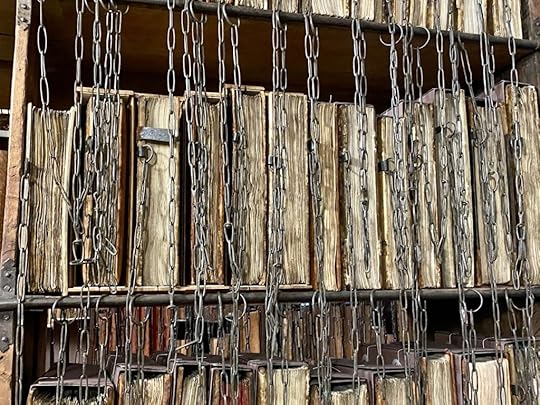 Click here to go to my previous investigationIntroduction
Click here to go to my previous investigationIntroductionWelcome back to another historical nugget! The months are really flying by now, can you believe that this is my seventh investigation? I have been receiving such lovely feedback about my research articles, it motivates me to do each and every one of them. I have you all to thank, because without you I would merely be shouting into the void. Anyway! To be on theme with The Haunting of Hecate Cavendish this month I will be looking into Hereford Chained Library – which is located in Hereford Cathedral. I will also be looking into some of the history of chained libraries and why they were used.
Hereford Chained Library OriginCurrently, The chained library is located in a section of the New Library Building, which is attached to the Mappa Mundi exhibition and at the rear of the Cathedral. The section with the chained library in it has special controlled environmental conditions to preserve the books themselves. It prevents the books from potentially getting damp or damaged. However, to keep things authentic, the books are in the original arrangement from 1611 to 1841. It makes you feel as if you’ve been transported back to the 17th century and you’re experiencing it as it was. Having now visited the library, I have discovered that the room itself is fairly small. When I think of library, I think of huge rows of bookshelves with sliding library ladders in it.
Hereford Cathedral seems to have a reputation of keeping historical artifacts well preserved, just like the Hereford Mappa Mundi being the largest and best preserved of its kind, the chained library is no different. It dates back to the 17th century and with its rods, locks and chains stuff intact, is also the largest surviving chained library. The Hereford Gospels from the 8th century are located within the library. They are the single most important book and is amongst the 229 medieval manuscripts that inhabit two bays of the library. European libraries from the Middle Ages through to the end of the 18th century would use chaining books to keep everything organized and easy to use.
Function and ReasoningOne of the main points of a chained library is to prevent people from taking the books anywhere except the table attached to the lower reaches of the shelves. Ensuring the books are not taken elsewhere helps to preserve the books. No doubt there would be far fewer books remaining for us to see today if they were not so carefully monitored and protected. The books are placed onto the shelves with their foredges facing out instead of their spines. Although this would make it harder to decipher which book is which, there was a handy little list at the end of each row indicating which book is which.
The point of them facing the ‘wrong’ way is so that the chains could be fastened to the spine of the book to then be connected to a rod that runs along the bottom of each shelf. Once you have picked a book, it can then be placed straight down onto the aforementioned table at the bottom of the shelves without the need to flip them and tangle the chains. The other end of the chain is then slotted onto the rod. These rods can actually be removed at each end of the shelf in the off chance a book needs to be removed. But of course, these rods are kept in place under lock and key to prevent just anyone from taking something.
ConclusionI think these books are more securely locked than most people’s front doors! It just goes to show how important books are and always have been throughout history. Plus, without books, I would be unemployed! Anyway, there is an insight into chained libraries and a bit of history behind them. Please join me again soon for another historical nugget.
 Click my cheesy grin to go to our Etsy shop
Click my cheesy grin to go to our Etsy shopThe post Chained Library – Skyla Investigates Part VII appeared first on Paula Brackston.
September 20, 2024
All Things Key – Skyla Investigates Part VI
 Click here to go to my previous investigationIntroduction
Click here to go to my previous investigationIntroductionSupposedly, we are in Summer now. But here in Dear Old Blighty we have had erratic weather to confuse our internal calendars. That being said, it is time for another instalment of my research for bookish facts. I will be looking into key making in the 1880’s. My delve into everything keys is for a segment of the second instalment in the Hecate Cavendish series. To be more specific, a special key has to be made by a key cutter for Hecate. She must get into the Sacristy and the strong box to reach the banned book. These words are a jumble of cryptic-ness and will become familiar in time.
ForgingThe most common type of key was the stamped key. Traditionally, they were made using bellows and fire within a Blacksmiths forge. To create the unique shape of a key, the tip of a glowing hot iron rod would be placed within a mould. The mould would be placed on the top and bottom of the iron to create an equal shape on both sides. Once shaped and slightly cooled, the hot end would be plunged into cold water to ensure it sets quickly. The bow end would then be hand cut and shaped to give it the famous hoop.
Bits and PiecesI have included a diagram of what the different parts that constitute a key. Over time, keys have become simpler and so the need for so many key wards or bits has lessened. Who would have thought that an everyday item could have so many variations and parts? The type that would’ve been made for Hecate is one similar to the diagram. It would have a large bow because smaller keyrings weren’t common in the 1800’s. The key would be amongst multiple others on a metal hoop, exactly like the one on the cover for The Haunting of Hecate Cavendish.
The different parts of a key can be called different things depending on the era, class and location. Additionally, certain segments have one name to encompass many. For example; the collar, throating and pin are all a part of the shoulder. This is why it can sometimes be confusing to look at multiple different diagrams of keys. Generally, the names have stayed the same throughout time, which is helpful for me at least.
Types and VariationsThe material that keys have been made of in the past varies. Sometimes they were made of a variety of metals such as white brass, yellow brass and steel. Prior to Blacksmiths creating keys with metals, they could be made from wood. There were also different types of keys for different purposes. Antique barrel keys and round keys were used for large old doors. They look exactly as you would picture a Victorian key to look; simple, bulky and practical. Another name for these are skeleton keys. However, they cannot open every door in a building like you would expect a skeleton key to, that would be another type altogether called the master skeleton key.
All in all, there are many keys to be had. The key to a strong box, the key to my heart and the key to your car. Each varying in size and shape, just like us. Please join me next time for waffle on another bookish research topic.
 Click the keys to go to our Etsy shop
Click the keys to go to our Etsy shopThe post All Things Key – Skyla Investigates Part VI appeared first on Paula Brackston.
September 7, 2024
All Things Etsy!
 ‘Secrets of the Chocolate House’ Pin Badges
‘Secrets of the Chocolate House’ Pin Badges ‘The Witch’s Daughter’ inspired Bookmarks
‘The Witch’s Daughter’ inspired Bookmarks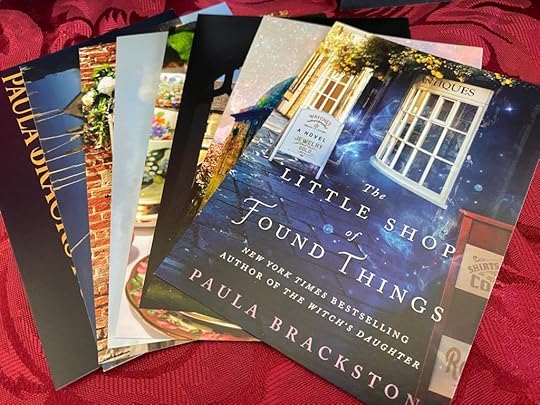 ‘Found Things’ series inspired postcardsCroeso i Etsy
‘Found Things’ series inspired postcardsCroeso i EtsyWelcome to our little blog about our new Etsy shop, this one is written by Skyla. As we speak, we currently have five bespoke and unique products. All of our products link directly either to the ‘Found Things’ series or ‘The Witch’s Daughter’. We plan on releasing at least one new product a month, with special deals and products coming in time for Christmas! It has been such a pleasure watching the shop go from a little seedling into a beautifully bloomed flower. We have had such wonderful and positive feedback on not just our products, but our shop, packaging and little extras in each parcel. Some of you that have already ordered something may have had the special addition of a cat hair or two attached to the sticky labels (Dutch loves to be included)!
Origin StoryWe were sitting on the sofa together on a chilly evening in May when the random idea to start our own merch shop was born. Any ideas that either of us have get talked about in great detail and this was no different. After the initial excitement, we thought about the logistics of it all. Ultimately, we knew that (almost) anything would be possible if we just put our little heads together to achieve it.
Lo and behold, here we now are! What was a passing thought has blossomed into deciding what colour we want our tissue paper to be, whether or not we need an eyelet (?!) at the top of the bookmarks and even which one of us gets the honour of keeping the supplies in their office (Skyla won that one). Both of us are completely new to this whole online selling malarkey and as always, we look forward to having our lovely peeps alongside us as we learn. We want to keep our shop as personal, weird and wonderful as we keep everything else. With love, care and cat hair in every parcel.
Gold Foil ‘The Witch’s Daughter’ inspired bookmarks. ‘Secrets of the Chocolate Shop’ and found things from the entire ‘Founds Things’ series eco-metal pin badges. ‘Found Things’ series related postcards. Cotton ‘The Little Shop of Found Things’ tote bags (kitten not included). Last but certainly not least, our new crepe de chine ‘The Witch’s Daughter’ scarf. There is a bunch more information about our products on the Etsy shop itself so please feel free to have a browse by clicking Xanthe’s little head below! Additionally, we are always open to suggestions on new products, ideas and inspiration. After all, we only want the best quality products for our best quality peeps!
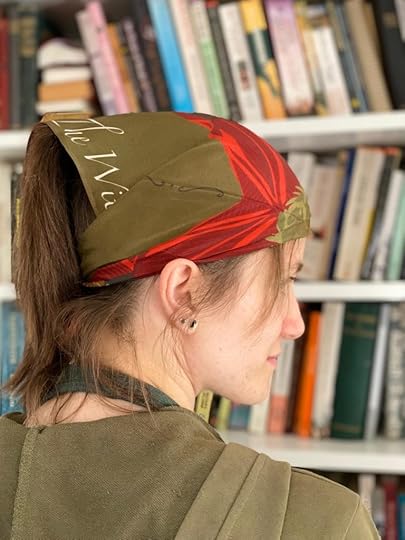 Click here to go to Skyla’s last blog
Click here to go to Skyla’s last blog
 Click Xanthe’s little head to go to our shop!
Click Xanthe’s little head to go to our shop!The post All Things Etsy! appeared first on Paula Brackston.
September 6, 2024
Hekate and Hounds- Skyla Investigates Part V
 Click here for my previous investigationIntroduction
Click here for my previous investigationIntroductionIt is time for another research topic! This month I will be looking into Hekate and her history with a focus on her hounds. Back in July, The Haunting of Hecate Cavendish was released! So to keep to a theme, I thought it would be fitting to delve into Hecate Cavendish’s name origin and the lore surrounding it. I am on a mission to investigate Hekate’s hound and their name as this is vital for Hecate Book two!
Although the exact origin of her name and original country of worship are unknown, Hekate is known for being a goddess in Greece, Egypt and Anatolia. It is believed that her name derives from a Greek root due to the first part of her name is similar to ‘ἑκών’ which means ‘willing’ or ‘she who works to her will’. She is seen as a symbol for magic, ghosts and crossroads as she is depicted as triple-bodied in the later versions of her. Ordinarily however, she is shown to be clutching keys, snakes or torches and accompanied by her hounds. Alongside this, there is a portrayal of her with the head of a hound. Regardless of which version of her you know, her dogs are included in some way.
Familiars‘Canine symbolism’ is mentioned frequently when talking about Hekate and her magic. It is believed that they symbolized her dominion over death. In Hekate’s Greek mythology, Queen Hekabe was stoned to death and became Hekate’s devout ally after being reborn as a black dog. Hekabe is the only named hound of Hecate’s, accompanied by Galinthias the Polecat. Both of these familiars have been transformed into this state as a form of punishment. After Queen Hekabe was captured by Odysseus after the defeat of her husband, she killed Thracian king Polymester after learning of his murder of her son. As the locals were on the brink of stoning her to death, the Gods intervened and transformed her into the black hound. Hekabe is seen as the one ‘kind faced’ hound that follows Hekate.
SymbolismIt is not just black dogs that have connections with Hekate’s underworld domain, it is any black animal. Alongside her black dogs, she also has a horse and polecat familiars. Dogs specifically signify protection, loyalty and acting on intuition. Although black dogs are seen as sacred and a way of connecting with the underworld, they were also used as sacrifices at the crossroads for Hekate.
 Boop the snoot to go to our Etsy shop
Boop the snoot to go to our Etsy shopThe post Hekate and Hounds- Skyla Investigates Part V appeared first on Paula Brackston.
August 23, 2024
Victorian Stained Glass- Skyla Investigates Part IV
 Click Here for my previous investigationIntroduction
Click Here for my previous investigationIntroductionThis month will be a little bit different to the others. I won’t be doing a comparison, I am simply researching how stained glass was made in the late Victorian era. And when I say simply, I mean quite the opposite. Although this has been an interesting topic to look into, finding a book about a related story has been nigh impossible. I will be including an example of two books where the topic is stained glass, one fiction and one non-fiction. I am researching this topic as it will be featuring in Book II of the Hecate Series. In The Haunting of Hecate Cavendish, Hereford Cathedral is a focal point with it’s gorgeous stained glass windows. Therefore, we must understand more about the history and creation procedure of how it was made.
ProductionAs cathedrals, abbeys and churches were built, they grew in size. This meant that the windows also became larger. A major reason that stained glass became so popular is not only because they are beautiful to look at, but also because they could be made very large as they were fused together with lead. Large sheets of different coloured glass could be fused together, so why not create smaller patterns within them? As the popularity of stained glass windows grew for religious purposes, art critics came out of the woodworks. John Ruskin was a critic that discussed the social and moral implications of religious buildings and their design. One of his main focuses was that there should be an ethical approach to the practice of these arts.
Originally, stained glass was made by combining potash, lime and sand. To create the array of different colours, various metallic oxides could be added to the mix. As time went on, new processes enabled craftsmen to create large sheets of glass with a surface layer of metallic oxide colours. These would next be melded together after being framed by lead.
The Glass Painters Daughter by Rachel HoreThis story focuses on a small stained-glass shop hidden amongst the cobbled backstreets of Westminster. After her father is alone and has fallen ill, Fran Morrison must return from far flung cities where she is pursuing a music career, to take her place in her father’s shop. Her father’s craftsman, Zac, and Fran take on an arduous commission. They must reassemble what turns out to be a Victorian love story within the image on the glass. The more she looks into the glass, the more she sees herself within the themes on the image. Her discovery leads her on a voyage of truth about the death of her mother.
 Victorian Stained Glass by Trevor Yorke
Victorian Stained Glass by Trevor YorkeThis novel provides a deep dive into the production and craft behind stained glass throughout history. A main focus is the impact it had on English churches for the duration of the nineteenth century. A major point in this novel is bringing to light some of the crucial stained glass artists of the Victorian era such as William Morris, Charles Eamer Kempe and Augustus Welby Pugin. He discusses that stained glass was not only featured in religious settings but became more publicly used. He mentions that in the beginning of the twentieth century, it became popular for terraced town houses to have stained glass door panels or features on the windows.
 Click here to go to our Etsy Shop
Click here to go to our Etsy ShopThe post Victorian Stained Glass- Skyla Investigates Part IV appeared first on Paula Brackston.
August 11, 2024
Poignant
Poignant – When reflecting on life, some memories cause a more poignant feeling than others. Anniversaries of experiences or approaching scenarios springing a sharp feeling of sadness.
Origin – evoking a keen sense of sadness or regret

The post Poignant appeared first on Paula Brackston.
August 4, 2024
Uninoculated
Uninoculated – As we come out of the illness season that is winter, this word feels relevant. Also upcoming new additions to the family makes me think of inoculations!
Origin – of a person, animal or plant: not having been inoculated against a disease. E.g. Given a weak form of the disease as a protection from it.
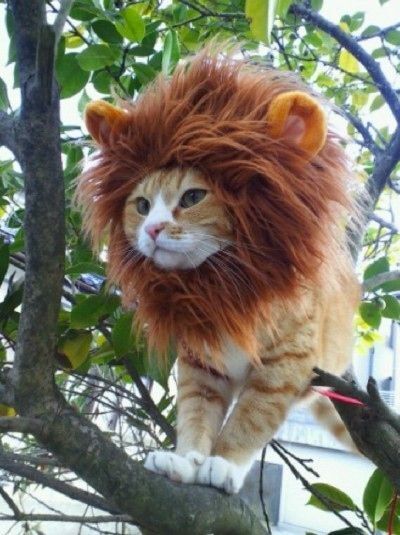
The post Uninoculated appeared first on Paula Brackston.
July 28, 2024
Widdershins
Widdershins – This is the opposite of clockwise, which is deosil (bonus word)! Commonly used in witchcraft and folklore superstitions. It was considered unlucky to travel widdershins around a church in Britian.
Origin – in a direction contrary to the sun’s course, considered as unlucky; anticlockwise.
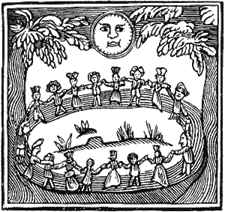
The post Widdershins appeared first on Paula Brackston.
July 21, 2024
Percolate
Percolate – As we were sat having our morning coffee and discussing ideas and future projects. Mum described her process of planning a book or an idea as percolating through her brain like coffee being prepared. As a child, my parents owned a percolator that looks identical to the one in this picture!
Origin – (of a liquid or gas) filter gradually through a porous surface or substance. (of coffee) be prepared in a percolator.

The post Percolate appeared first on Paula Brackston.



